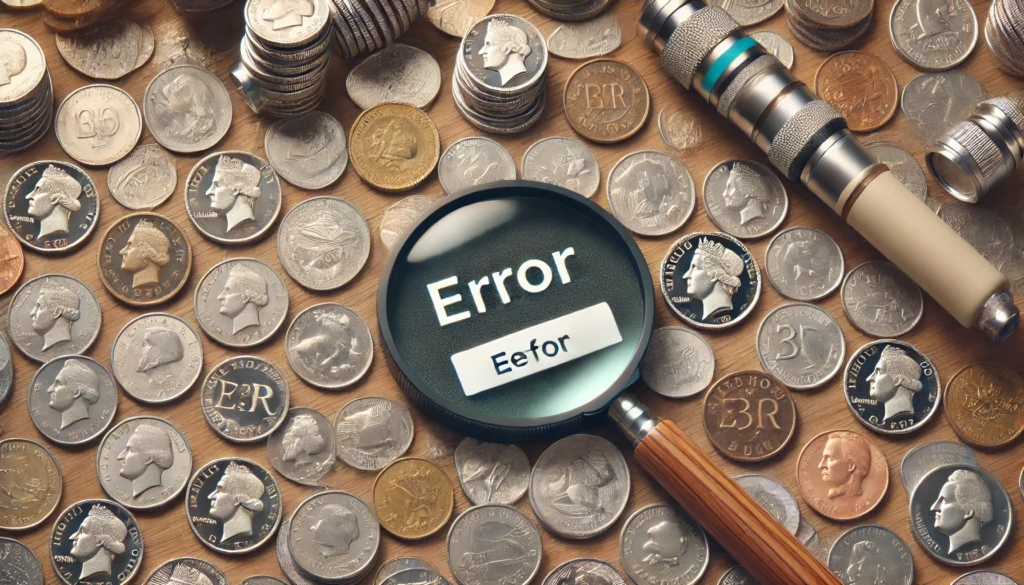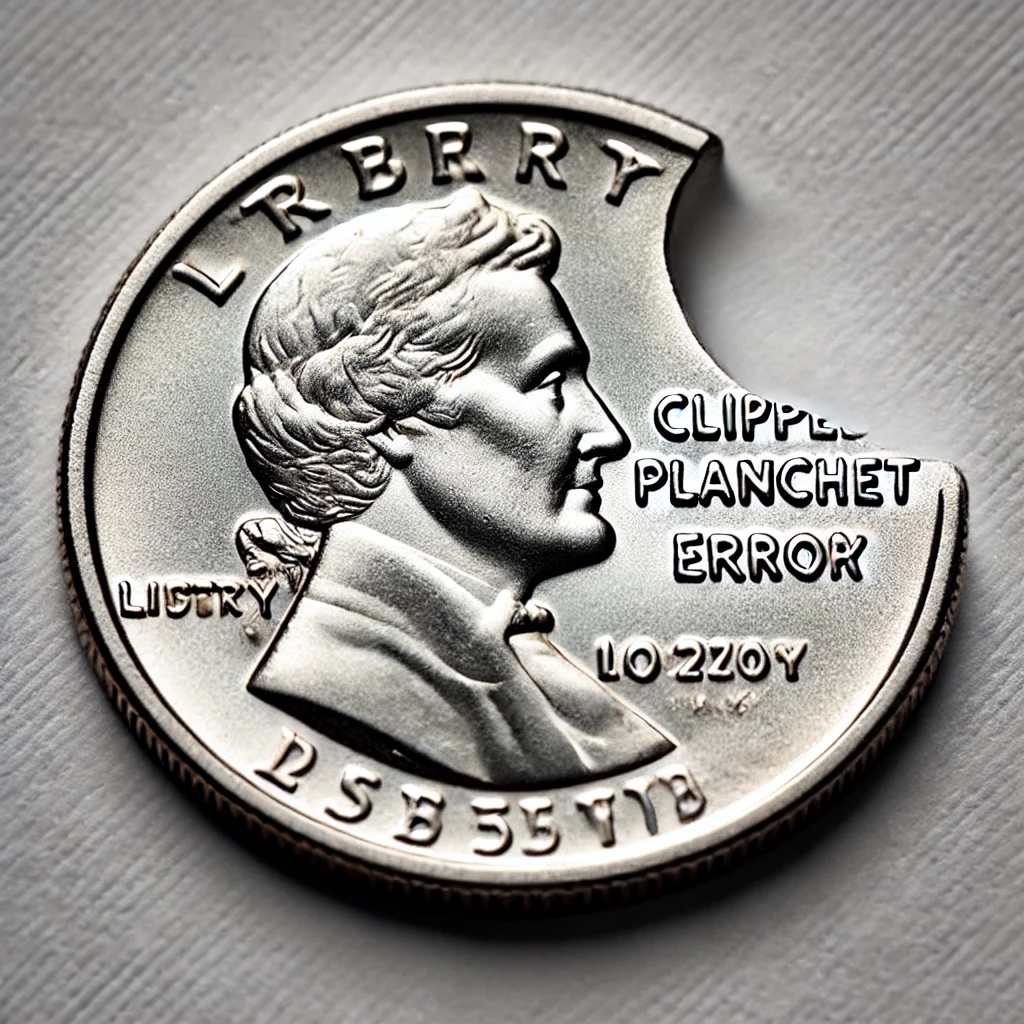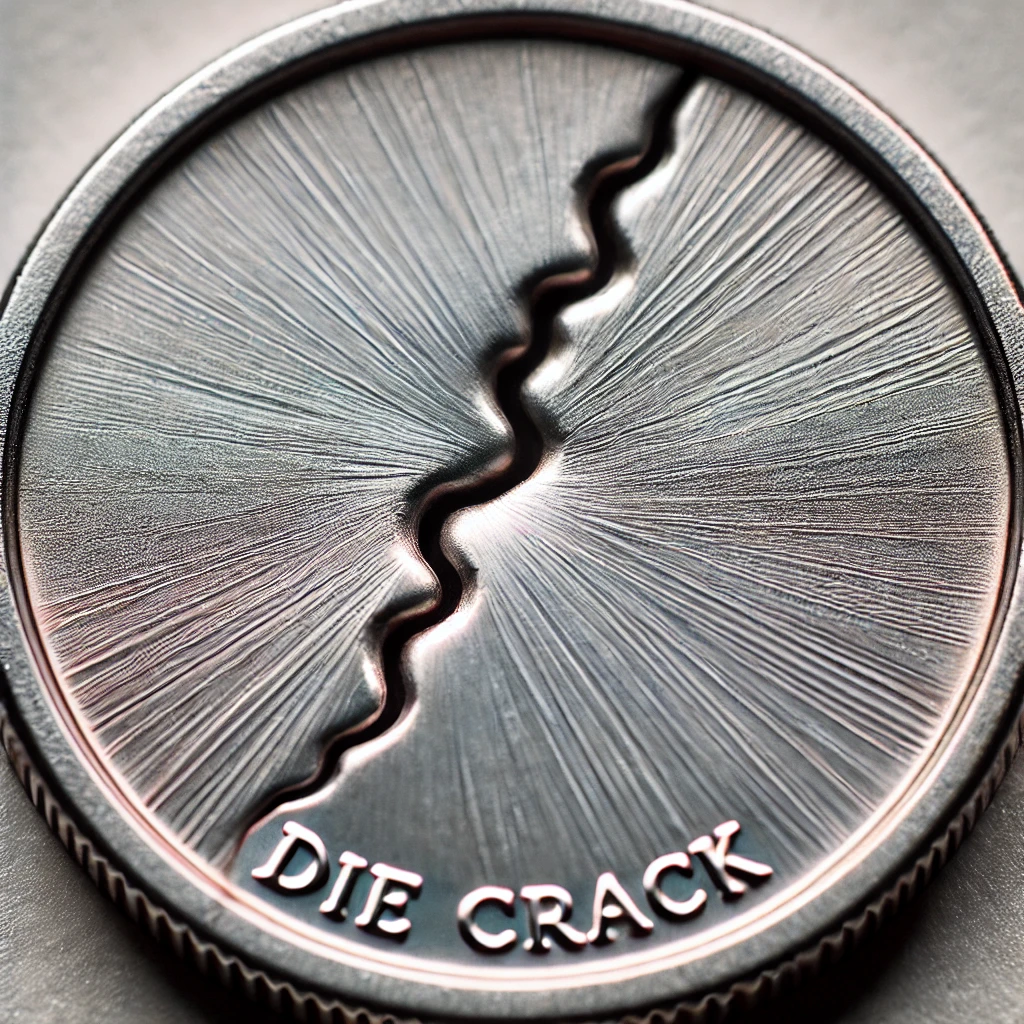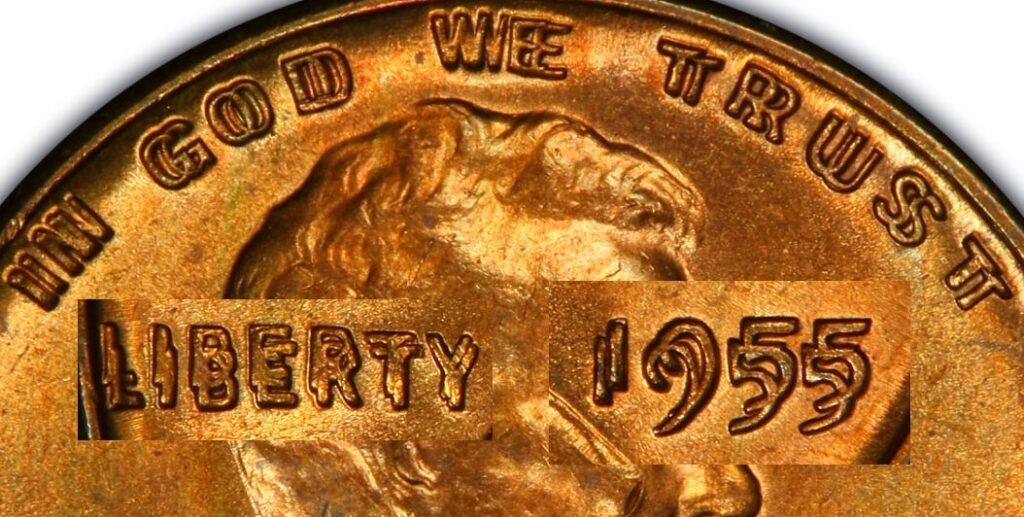Coin Errors
Rare coin errors are captivating anomalies that occur during the minting process, transforming ordinary coins into unique collectibles. These errors, ranging from striking mistakes to planchet defects, can add significant value to a coin and intrigue collectors worldwide. In this guide, we’ll explore the different types of rare coin errors, how to identify them, and tips for building a valuable collection

Comprehensive Guide to Coin Errors
Understanding Coin Errors
Coin errors are fascinating anomalies that occur during the minting process, making them unique and often valuable collectibles. The United States Mint produces millions of coins each year, with the majority being flawlessly manufactured. However, occasionally, defective coins slip through the rigorous inspection process and enter circulation. These error coins are rare, and their rarity often makes them highly sought after by collectors and enthusiasts.
Types of Coin Errors

1. Planchet Coin Errors
- Blank Planchet: A coin that was not struck by a die and remains a blank metal disc.
- Clipped Planchet: Coins that are missing a portion due to an error during the blanking process.

** A die crack is not a crack in a coin like this picture. The crack would have been in the die that struck the coin. I left this image because all the little lines sticking up off the coin are correct. I die crack would be a raised reverse image of a crack. ChatGPT couldn’t make a picture like I wanted. This is as close as we could get. **
2. Die Errors
- Doubled Die: Occurs when the die imprints the coin twice, creating a noticeable doubling effect on the coin’s design.
- Die Cracks: Cracks in the die result in raised lines on the coin.
- Cud Errors: A break in the die causes a raised, unstruck area on the coin.
3. Striking Errors
- Off-Center Strike: The coin is struck off-center, resulting in part of the design missing.
- Broadstrike: The coin is struck without a collar, causing it to expand beyond its normal size.
- Multiple Strikes: The coin is struck more than once, leading to overlapping designs.
4. Minting Process Errors
- Die Adjustment Strike: Coins struck with minimal pressure, leading to a weakly struck design.
- Strikethrough Errors: Foreign objects or debris on the planchet during striking result in an indentation or irregularity.
- Wrong Planchet: Coins struck on a planchet intended for a different denomination.
Collecting Coin Errors
Collecting coin errors can be an exciting and rewarding hobby. Here are some tips for building a collection:
- Education: Learn about different types of coin errors and how they occur. Books, online resources, and joining numismatic clubs can be very helpful.
- Authenticity: Ensure the authenticity of error coins by purchasing from reputable dealers or having them authenticated by professional grading services.
- Condition: The condition of the error coin significantly impacts its value. Coins in higher grades with minimal wear are more desirable.
- Documentation: Keep detailed records of your error coins, including their type, grade, and purchase details.
Notable Error Coins

- 1955 Doubled Die Lincoln Cent: One of the most famous error coins, known for its dramatic doubling on the obverse.
- 1937-D Three-Legged Buffalo Nickel: A popular error caused by over-polishing the die, which removed one of the buffalo’s legs.
- 2004 Wisconsin Extra Leaf Quarter: An error coin with an additional leaf on the corn stalk, creating a valuable variety.

Value of Error Coins
The value of error coins depends on several factors:
- Rarity: The rarer the error, the more valuable the coin.
- Type of Error: Some errors are more desirable than others. For example, major errors like doubled dies and off-center strikes are typically more valuable.
- Condition: Coins in better condition fetch higher prices.
- Demand: The popularity of certain errors among collectors can drive up prices.
Resources for Error Coin Collectors
- Books: “The Error Coin Encyclopedia” by Arnold Margolis and Fred Weinberg is a comprehensive guide.
- Books: “The Cherrypickers Guide to Rare Die Varieties of United States Coins.” Vol. 1 and 2 6th ed
- Websites: Variety Vista, PCGS, NGC
- Clubs: Joining numismatic clubs or associations can provide access to exclusive resources and a community of fellow enthusiasts.
Conclusion
Coin errors offer a unique glimpse into the minting process and provide collectors with intriguing and valuable pieces. By understanding the different types of errors and learning how to identify and collect them, you can build a fascinating and potentially lucrative collection. Stay informed, buy wisely, and enjoy the journey into the world of coin errors.
Join Us at Rich Off Error Coins
Become a member of Rich Off Error Coins to access exclusive information on error coins, participate in forums, and get expert advice on your collection. Our community is welcoming and supportive, ensuring you can confidently share and learn without fear of judgment. Join us today and start uncovering the fascinating world of coin errors!
Stay connected with us on Facebook and other social media platforms to share knowledge with your friends and stay updated with the latest information on coin errors.